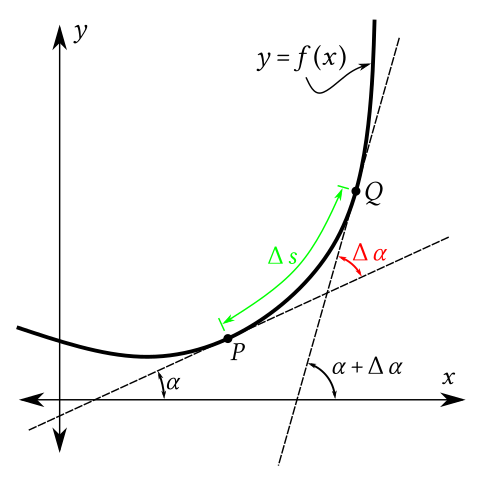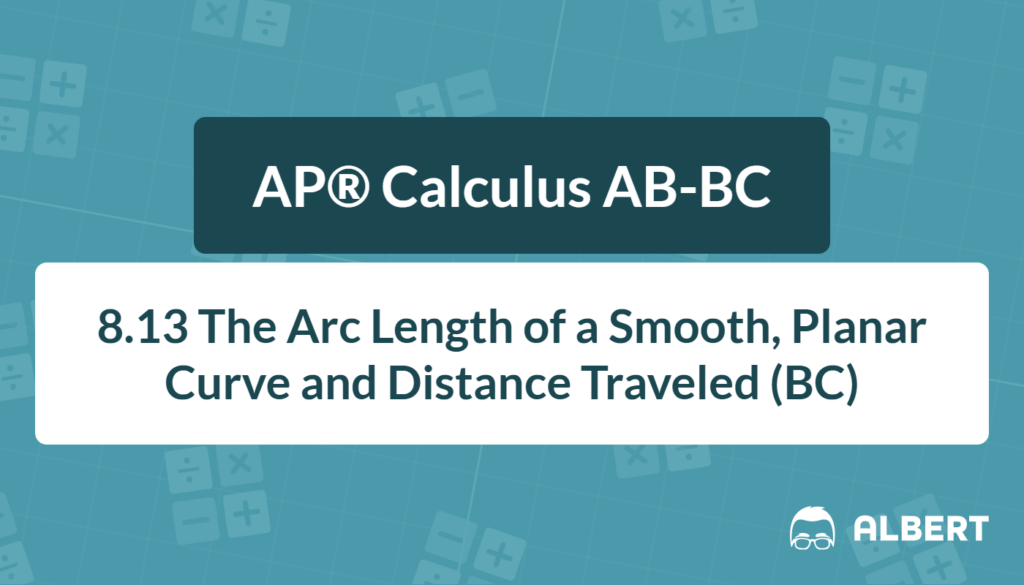Arc length is a fundamental idea in AP® Calculus AB-BC. It allows students to measure the distance along a curve, rather than a straight line. Therefore, understanding the arc length of a curve formula is crucial for solving a variety of problems.
In many real-world applications, the need arises to find the length of curved paths and boundaries. This concept also appears in definite integral questions on exams. Moreover, mastering the arc length formula in calculus develops deeper intuition about integrals and derivatives.
What We Review
Understanding the Arc Length Formula in Calculus
What Is Arc Length?
Arc length refers to the distance along a curve between two points. Imagine walking along a winding road rather than taking a direct line. The total path you walk is like the arc length of that road. In calculus, this measurement is determined by slicing the curve into small segments and summing their lengths. These slices become infinitesimally small, leading to an integral that represents the entire distance.

Foundation of the Arc Length Formula
The basic idea behind the arc length formula in calculus starts with short line segments that approximate the curve. Each tiny segment has a length that comes from the Pythagorean theorem. Adding up these lengths turns into a definite integral.
For a curve described by y = f(x) on the interval [a, b], the arc length is given by:
\int_{a}^{b} \sqrt{1 + \left(\frac{dy}{dx}\right)^2} dxSimilarly, for a curve described by x = g(y) on [c, d], the arc length formula becomes:
\int_{c}^{d} \sqrt{1 + \left(\frac{dx}{dy}\right)^2} dyThese forms handle different ways of expressing the function, ensuring maximum flexibility in problem-solving.
When to Use the Formula
The arc length formula often appears in AP® Calculus AB-BC when questions involve measuring curves. It is especially important when modeling physical scenarios, such as finding the length of a suspension cable or a curved boundary. However, note that continuous functions with continuous derivatives on the chosen interval are essential for applying the formula correctly.
How to Find Arc Length of a Curve: Step-by-Step
Identify the Correct Formula
Decide whether the problem uses y = f(x) or x = g(y). When the function is expressed in terms of x, rely on the first formula. Conversely, if the function is expressed more conveniently in terms of y, select the second.
Calculate the Derivative
Next, compute the derivative carefully. For y = f(x), find \frac{dy}{dx}. For x = g(y), compute \frac{dx}{dy}. Then square this derivative and add 1 inside the square root.
Set Up the Integral
Identify the proper interval for the variable of integration. For instance, if the domain given is [a, b] in terms of x, place those as the bounds of the integral. After that, substitute the derivative expression into the formula.
Evaluate the Integral
Finally, integrate \sqrt{1 + (\text{derivative})^2} over the correct interval. Some arc length integrals require standard approaches, while others might involve trigonometric substitution or other techniques.
Example 1: Arc Length of a Function y = f(x)
Consider y = f(x) = x^2 on the interval [0, 2]. Demonstrating how to find arc length of a curve starts with these steps.
- Derivative
- The derivative of y = x^2 is \frac{dy}{dx} = 2x.
- Formula Setup
- The arc length formula calculus expression is:
- \int_{0}^{2} \sqrt{1 + (2x)^2} dx
- This simplifies to:
- \int_{0}^{2} \sqrt{1 + 4x^2} dx
- The arc length formula calculus expression is:
- Integration
- To tackle \int_{0}^{2} \sqrt{1 + 4x^2} dx, use a trigonometric substitution. For example, set 2x = \tan(\theta). This works because \sqrt{1 + \tan^2(\theta)} = \sec(\theta).
- However, if familiarity with such substitutions is still growing, consider looking up a standard formula or using a relevant substitution technique.
Example 2: Arc Length of x = g(y)
Sometimes, an equation might be simpler to handle as x in terms of y. Suppose x = g(y) = y^3 on [0, 1].
- Derivative
- Calculate \frac{dx}{dy} = 3y^2.
- Set Up the Formula
- The relevant arc length of a curve formula is:
- \int_{0}^{1} \sqrt{1 + (3y^2)^2} dy
- This becomes:
- \int_{0}^{1} \sqrt{1 + 9y^4} dy
- The relevant arc length of a curve formula is:
- Evaluate the Integral
- A direct technique might be challenging, so a more advanced method or reference table can help. This integral commonly appears in arc length examples and may require special substitutions or partial fraction approaches if expanded.
- Final Arc Length
- After evaluation, the numerical or symbolic solution emerges. This result confirms the length of the curve described by x = y^3 from y=0 to y=1.
Common Challenges and Helpful Tips
- Misidentifying the interval can lead to incorrect results.
- Forgetting to square the derivative is a frequent mistake. Therefore, double-check derivative calculations.
- Some integrals are complex, so using trigonometric or hyperbolic substitution can simplify the result.
- Always confirm that the function is continuous and differentiable on the interval before applying the formula.
Quick Reference Chart: Vocabulary and Definitions
| Term | Definition |
| Arc Length | The length of a curve between two points |
| Definite Integral | An integral over a specific interval, forming the foundation of arc length calculations |
| Derivative | The rate of change of a function, used in the integrand for the arc length formula |
| Continuity | A property indicating that a function has no breaks, holes, or jumps in a given interval |
Conclusion
The arc length formula is a powerful tool in calculus. Mastering how to find arc length of a curve, whether given by y = f(x) or x = g(y), is key for success in AP® Calculus AB-BC. Furthermore, repeated practice with various functions and integration techniques will strengthen calculus skills and build deeper confidence in solving such problems.
Sharpen Your Skills for AP® Calculus AB-BC
Are you preparing for the AP® Calculus exam? We’ve got you covered! Try our review articles designed to help you confidently tackle real-world math problems. You’ll find everything you need to succeed, from quick tips to detailed strategies. Start exploring now!
Need help preparing for your AP® Calculus AB-BC exam?
Albert has hundreds of AP® Calculus AB-BC practice questions, free responses, and an AP® Calculus AB-BC practice test to try out.








